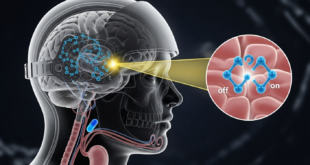Photonics is the science of controlling the flow of light. The characteristics of the waves of light or individual photons that make up light can be used to explore the universe, cure diseases, and even solve crimes. It is a branch of optics that deals with the generation, transmission, modulation, detection, and application of light in optical systems. Photonics technology has been applied to an incredibly diverse range of fields, including telecommunications, sensing, and imaging, using various Lasers and Optics.
Photonics is everywhere: in consumer electronics (barcode scanners, DVD players, TV remote controls), telecommunications (fiber optics, lasers, switches), health (eye surgery, medical instruments), manufacturing (laser cutting and machining), defense and security (infrared cameras, remote sensing), and entertainment (holography, cinema projection), to name a few examples. Photonics is so ubiquitous in our daily lives that the 21st century has been called the Age of the Photon.
Military Photonics
The military relies heavily on the optical spectrum for sensing, mapping and identifying enemy intent over large distances. Photonics can provide the military with higher quality sensing and communications devices. The vision of photonics is generating and harnessing photons for real-time, high-resolution, wide area persistent day/night surveillance, missile imaging and tracking, biological and chemical Sensing, optical networks, high-bandwidth free-space communication, information processing and Optronic Warfare.
Modern defense systems are migrating toward optically based imaging, remote sensing, communications, and weapons. In Optics area, plastic optics has started entering mainstream along with glass optics. Staring array IR detectors have come into use reducing the size and weight of thermal imagers.
Uncooled IR imagers are providing advantages like low weight and small size but have got range limitations as compared to cooled ones. Mercury Cadmium Telluride (MCT) detectors are dominant in LWIR area and InSb the MWIR area. An example of a photonics based technology for military use is multispectral imaging, which can extract significantly more information about its surroundings than regular sensors. Multispectral imaging can be used for tasks such as locating explosives, uncovering enemy movements and pinpointing the depth of hidden bunkers.
Multi-spectral cameras have been developed, The Targeting ability of weapon systems in adverse environments will be increased using multi-spectral sensors and supporting algorithms. Sensor fusion and Automatic Target Recognition technologies are critical technologies. Diode lasers are coming into use in low power lasers.
Modern weapon systems have day/night vision along with multi-sensor acquisition and tracking capability which is enabled by microwave and/ or millimeter wave radar, thermal imagers operating in the mid- and long wave infrared bands, laser range finders, ultraviolet receivers, and television systems operating in the shortwave infrared and optical bands .
Fiber Optical communication systems, enabled by Erbium-doped fiber amplifiers (EDFA) technology have replaced of electronic communications in the telecom, datacom and military communications especially for long haul (> 1000 km) communication links. Also at the metro, to access, to in-room and intra-rack scales, optical fiber has completely replaced copper due to its advantages like high speed, minimum EMI.
The Free Space Optical Communication (FSO) technology has matured to some extent for fixed-site commercial deployments. The military adoption of FSO data links is also increasing because of their ability to provide gigabits/s data rates ,low probability of intercept (LPI), low probability of jamming (LPJ) as well as the potential for extremely low bit error rate (BER) characteristics. The potential applications of Free Space Optical Links in the military domain are many, from short-range inter-ship links and UAV-to-ground data links. FSO systems are expected to dominate aircraft-to-aircraft and satellite-to-satellite communications links, they where the weather and fog, turbulence and battlefield obscurants cannot degrade their system performance.
Directed energy laser weapons have reached a high level of maturity phase and ready to enable many new missions that were extremely complex to realize with conventional kinetic energy weapons. These include ground based laser systems (GBL) for disabling low earth orbit satellites and destroying missiles, airborne laser systems (ABL) for destroying ballistic missiles and space based laser systems (SBL) for negation of theatre and intercontinental ballistic missiles.
The Laser DEW are continuously being enhanced through ultra high efficiency multi-kilowatt single mode lasers, incoherent & coherent beam combining technologies, light weight large aperture beam directing optical systems, high precision (sub microrad) tracking & beam pointing technologies, electronic beam steering technologies – optical phased array, adaptive optical system technologies for long range atmospheric beam propagation correction and thermal management systems. Technologies for multiple target detection and tracking abilities coupled with extremely short reaction times and a very high hit probability are being built into a DEW system.
Photonics based spectrometers and holographic imagers are also used in the military. A spectrometer is a chemical sensor that can be used to detect explosives in liquids and solids. A holographic imager is a device that produces 3D visualisations of urban and mountainous terrain. A major advantage of these photonics devices is that they are lightweight and small, making them easily portable for soldiers in the field.
Imaging Sensors & Optics
Increasing and enhancing imaging capabilities to solve soldier problems like obscured vision, long-range identification and high performance infrared imaging. All this at higher operating temperatures and with reduced size, weight, power, and cost.
Ultraviolet (UV) Optoelectronics
Developing new devices with enhanced material properties for UV detectors, light emitting diodes and lasers. Applications include sensing, water purification and monitoring, threat mitigation and communications.
Sensor Protection
Exploring specialty materials and devices designed to protect eyes and sensors from wavelength agile microsecond to nanosecond pulsed lasers and ultrafast lasers in multiple wavelength bands.
High Energy & Tactical Lasers
Investigating materials for solid state lasers suitable for military applications. Research is directed at improving laser average and peak power, thermal management, scalability, beam quality and efficiency.
 International Defense Security & Technology Your trusted Source for News, Research and Analysis
International Defense Security & Technology Your trusted Source for News, Research and Analysis
